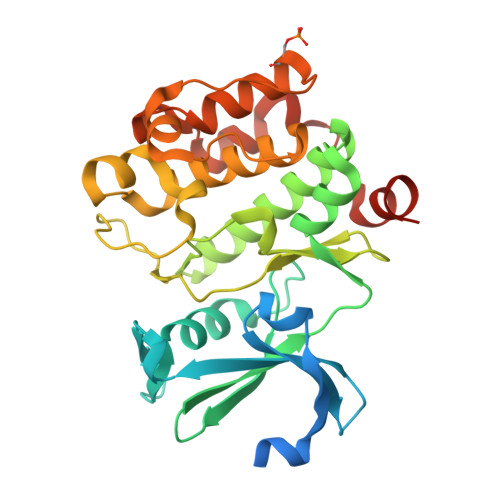What doesn't fit is made to fit: Pim-1 kinase adapts to the configuration of stilbene-based inhibitors.
Hochban, P.M.M., Heyder, L., Heine, A., Diederich, W.E.(2024) Arch Pharm (Weinheim) 357: e2400094-e2400094
- PubMed: 38631036
- DOI: https://doi.org/10.1002/ardp.202400094
- Primary Citation of Related Structures:
8R10, 8R18, 8R1N, 8R1P, 8R1T - PubMed Abstract:
Recently, we have developed novel Pim-1 kinase inhibitors starting from a dihydrobenzofuran core structure using a computational approach. Here, we report the design and synthesis of stilbene-based Pim-1 kinase inhibitors obtained by formal elimination of the dihydrofuran ring. These inhibitors of the first design cycle, which were obtained as inseparable cis/trans mixtures, showed affinities in the low single-digit micromolar range. To be able to further optimize these compounds in a structure-based fashion, we determined the X-ray structures of the protein-ligand-complexes. Surprisingly, only the cis-isomer binds upon crystallization of the cis/trans-mixture of the ligands with Pim-1 kinase and the substrate PIMTIDE, the binding mode being largely consistent with that predicted by docking. After crystallization of the exclusively trans-configured derivatives, a markedly different binding mode for the inhibitor and a concomitant rearrangement of the glycine-rich loop is observed, resulting in the ligand being deeply buried in the binding pocket.
- Institut für Pharmazeutische Chemie, Zentrum für Tumor und Immunbiologie, Philipps-Universität Marburg, Marburg, Germany.
Organizational Affiliation:





















